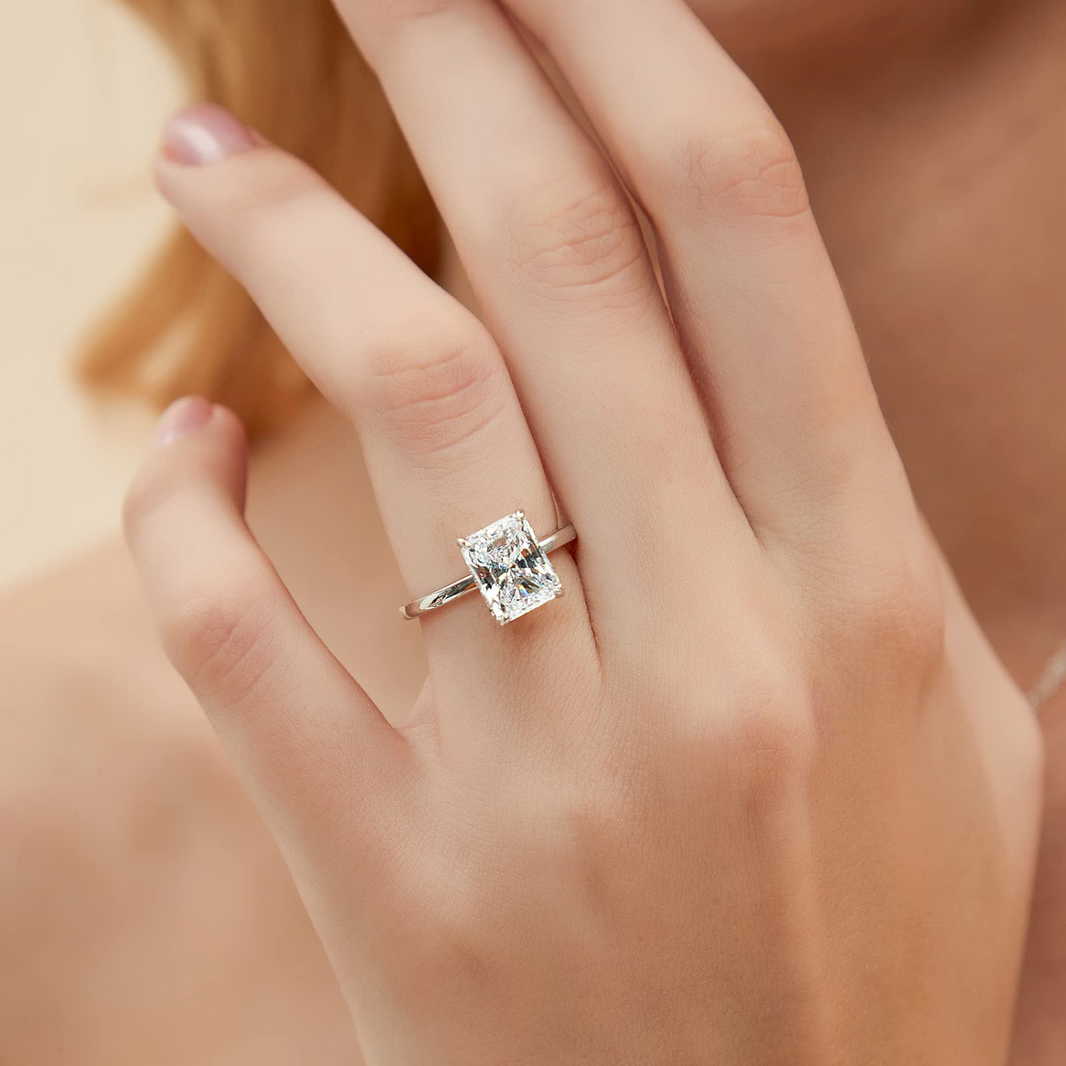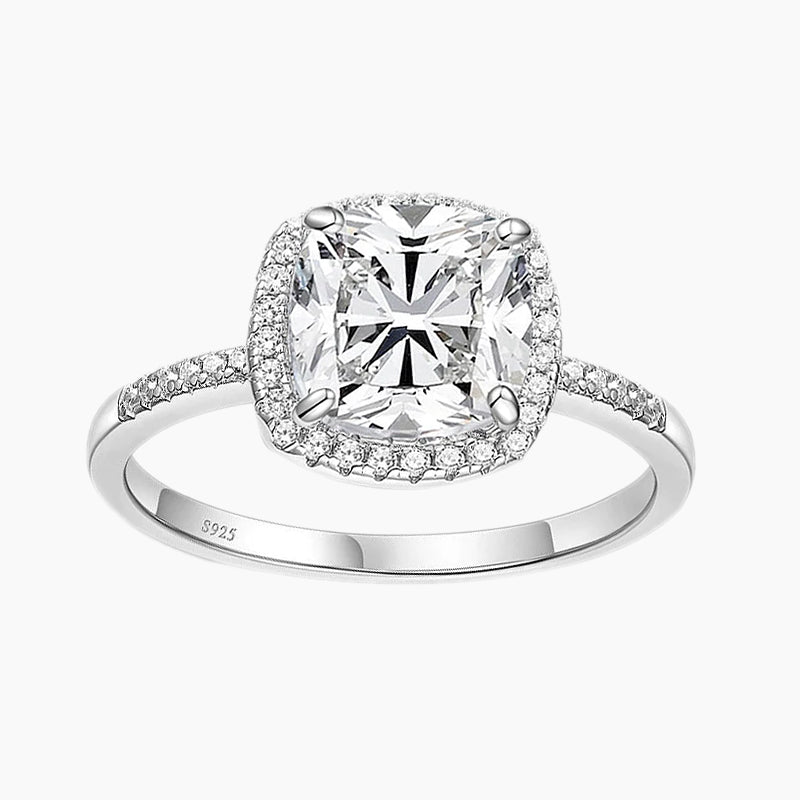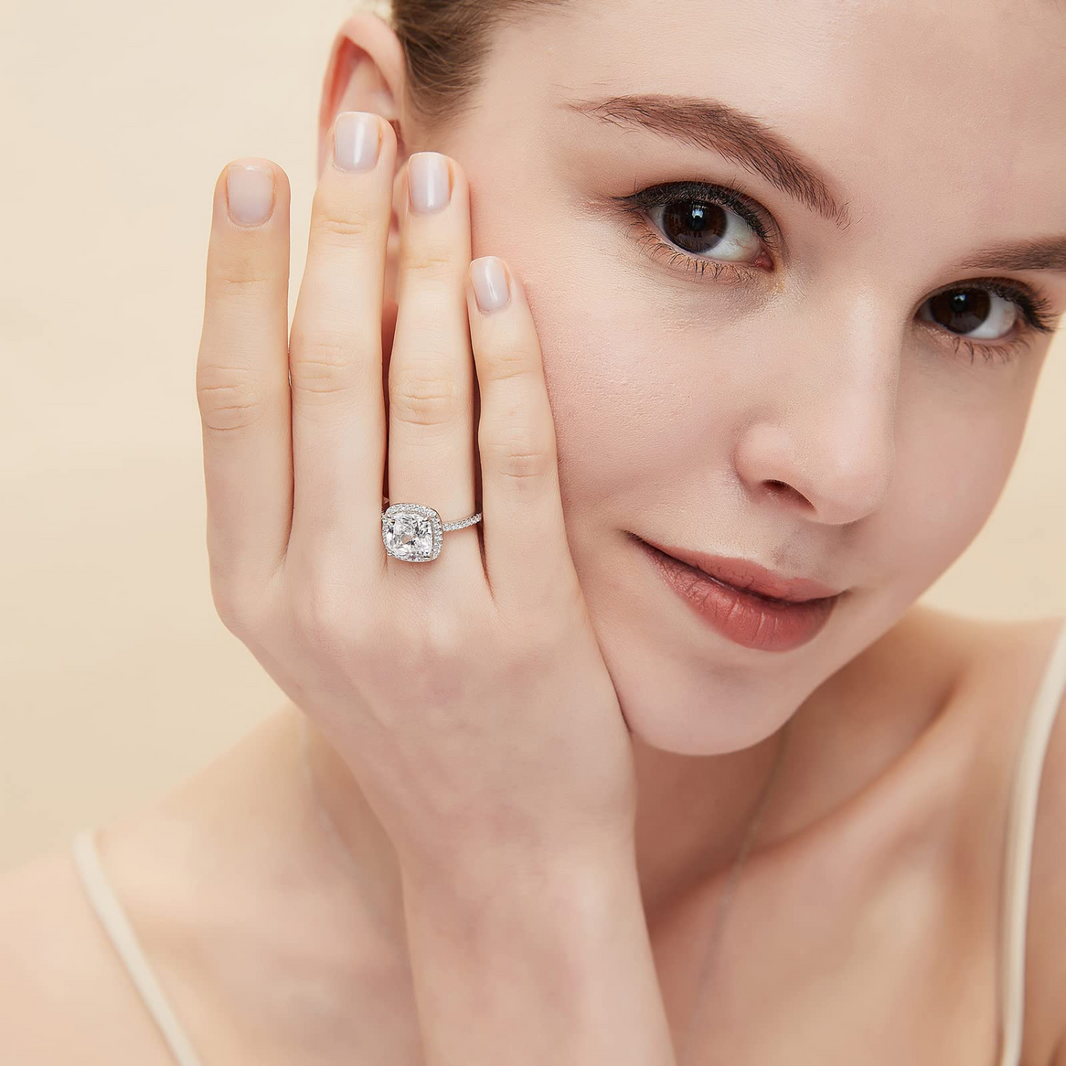Finding the perfect wedding band for your engagement ring is like finding its soulmate. Should you go for the classic versatility of a straight band, or the custom-fit appeal of a curved one? This guide will break down the pros and cons of both styles to help you make a confident decision.
What is a Straight Wedding Band?
A straight wedding band, as the name suggests, is a ring with a perfectly circular and level profile, both inside and out. It's the most classic and ubiquitous design, ranging from a simple metal band to an eternity ring paved with diamonds.
Classic Examples:
- The Classic Plain Band: Simple, timeless, and universally flattering.
- The Eternity Band: Featuring a continuous circle of diamonds, symbolizing everlasting love.
- The Channel-Set Band: Offers a sleek line of diamonds for a touch of brilliance without a bulky profile.
What is a Curved Wedding Band?
In the other corner, we have the curved wedding band. Also known as a notched or contoured band, it's designed with a specific dip or curve on its inner side. This design has one primary goal: to nestle perfectly against the unique contours of your engagement ring, creating a seamless, unified set.
Common Examples:
- The Notched Band: Features a V-shaped or U-shaped dip that accommodates the head (or center stone) of your engagement ring.
- The Huggie Band: Gently "hugs" the basket and setting of your engagement ring for a snug fit.
- The Custom Contour Band: Specifically designed to match the exact silhouette of your one-of-a-kind engagement ring.
Weighing Your Options: A Look at Pros and Cons
Now, let's dive into the key differences to help you weigh your options, starting with flexibility.
Flexibility and Versatility
The straight band's greatest advantage is its incredible versatility. It is a complete, standalone piece of jewelry. You can wear it alone with ease, making it perfect for times when you might not want to wear your engagement ring, like while traveling or at the gym. If you ever decide to upgrade your engagement ring, a straight band will likely still pair beautifully with the new style.
A curved band, in contrast, is often a dedicated partner. Its beauty is intrinsically linked to its partner, and it can sometimes look or feel unbalanced when worn alone.
Aesthetics and Fit
However, when it comes to aesthetics and fit, the curved band is the undisputed winner. It solves the common problem of a gap between a straight band and an engagement ring with a prominent setting. By contouring around the main stone, it creates a sleek, unified look that feels intentional and elegant, enhancing the overall design of your engagement ring.
A straight band offers a classic and independent aesthetic, but it may leave a gap with certain ring settings—a look some adore for its layered effect.
Comfort and Price
Finally, considering comfort and price, a straight band is a traditional, comfortable circle. Curved bands can be incredibly comfortable when worn as a set, with no gaps to catch on clothing.
Regarding price, straight bands are often more economical, especially in simple styles. Curved bands can be slightly more expensive due to the custom nature of their design and the additional craftsmanship required.
How to Make the Right Choice for Your Ring
So, which one is right for you? The decision often comes down to the engagement ring itself.
A curved wedding band is often the ideal choice if:
- Your engagement ring has a prominent center stone (like a solitaire), an asymmetric design, or a unique shape.
- You are bothered by the gap between two straight rings and want a seamless fit.
- You plan to solder your rings together and wear them as a single unit permanently.
A straight wedding band might be your perfect match if:
- Your engagement ring is already a simple, symmetrical design.
- You value versatility and want a band you can wear comfortably on its own.
- You think you might upgrade or change your engagement ring in the future.
- You love the trend of stacking multiple straight bands for a fashionable look.
Thinking Outside the Box: Creative Solutions
Don't feel locked into a perfect match! There are plenty of creative ways to approach this. Mixing a straight eternity band with your engagement ring can create a beautiful, modern stacked look that celebrates individuality.
Alternatively, some wear their curved band with the notch facing out, turning it into a unique statement piece on its own.
Conclusion
In the end, the choice between a straight and a curved wedding band is a deeply personal one. There's no right or wrong answer, only what's right for your style, your life, and the vision you have for your symbols of love.
Whether you choose the independent spirit of the straight band or the devoted embrace of the curved one, your wedding band will be a beautiful testament to your unique love story.









